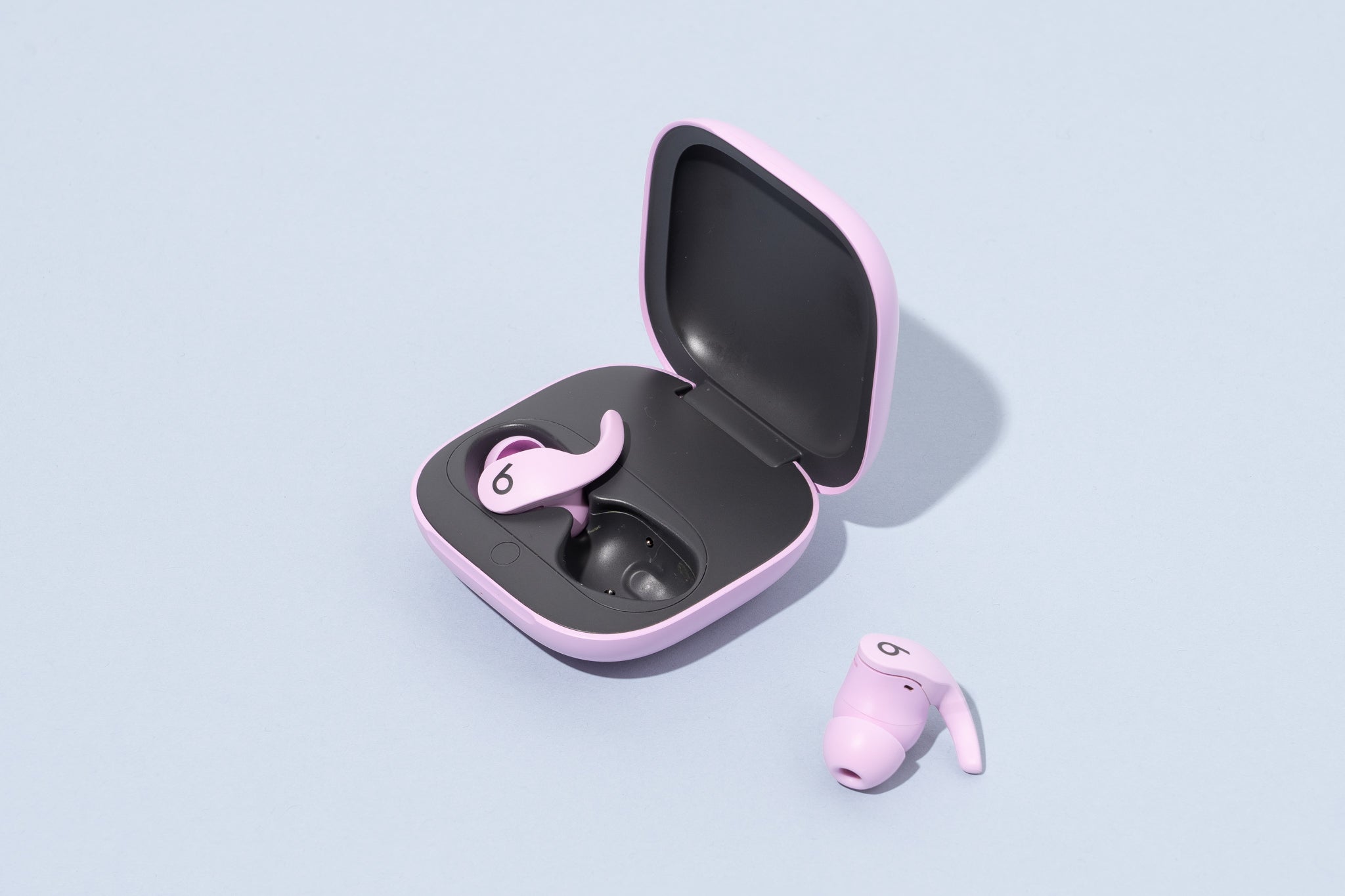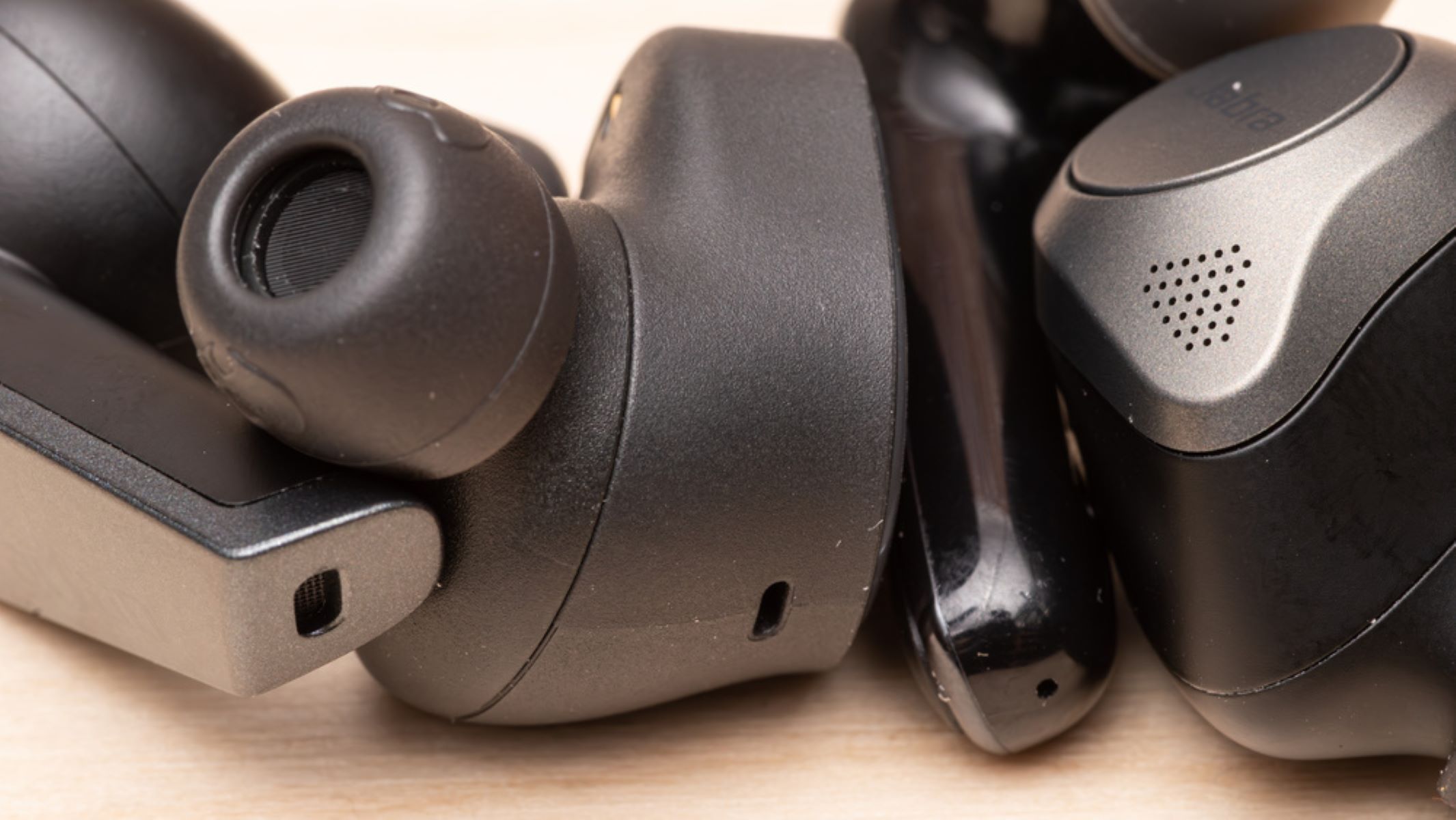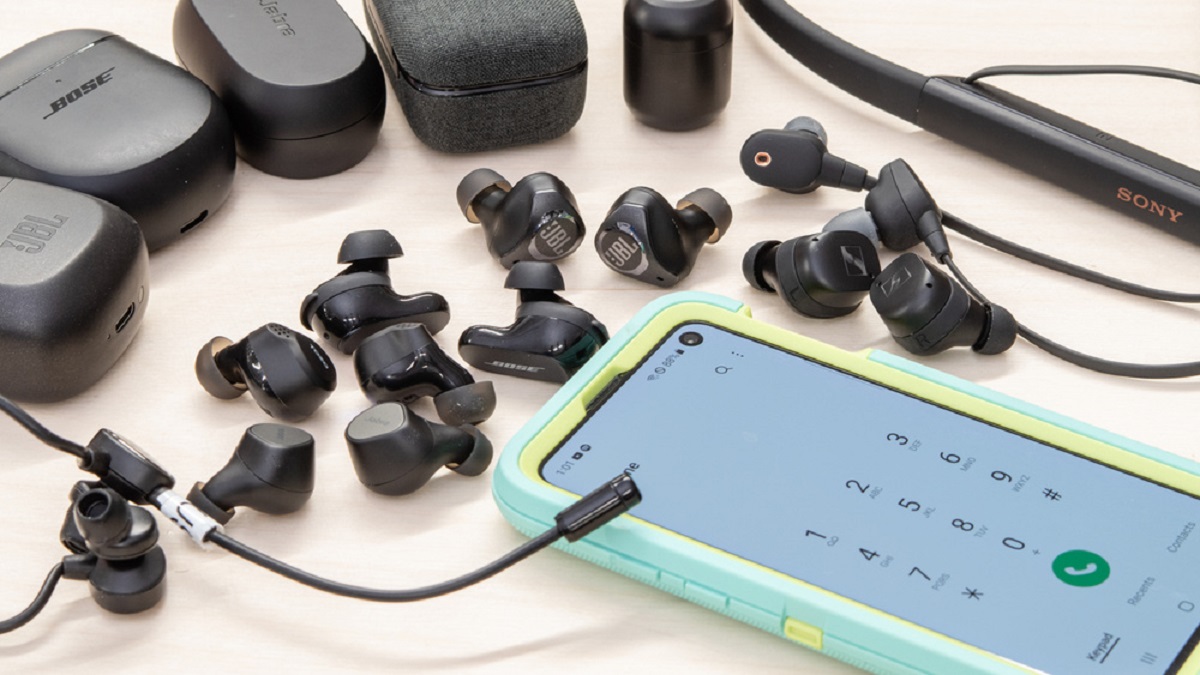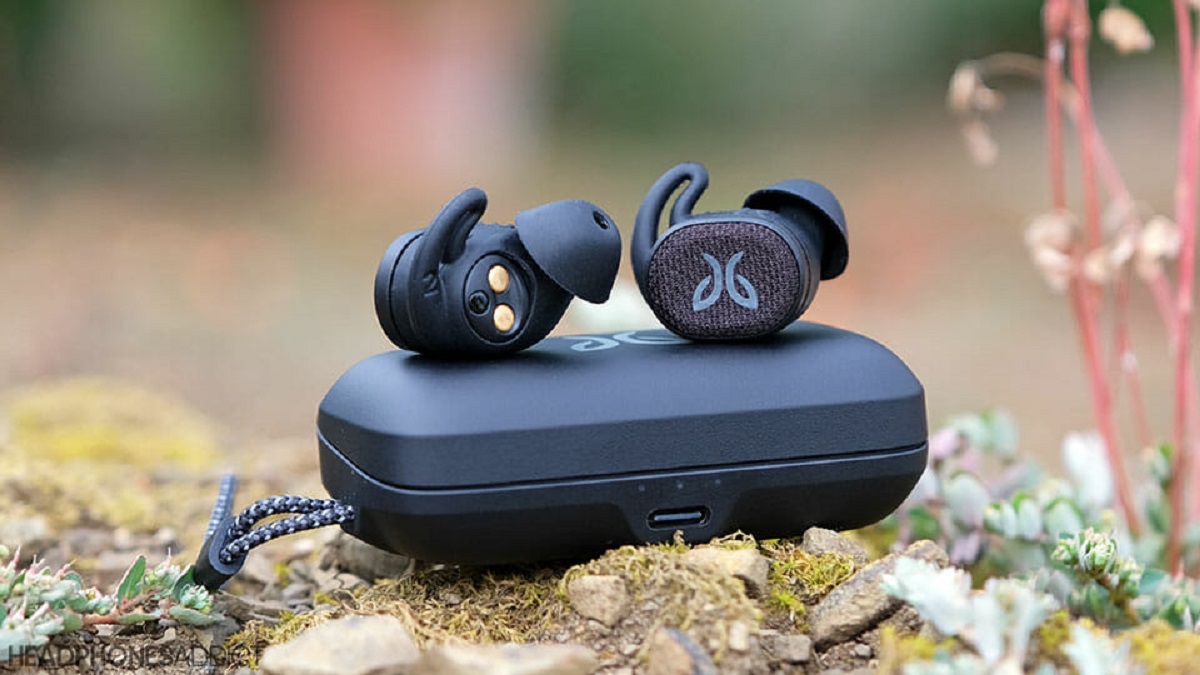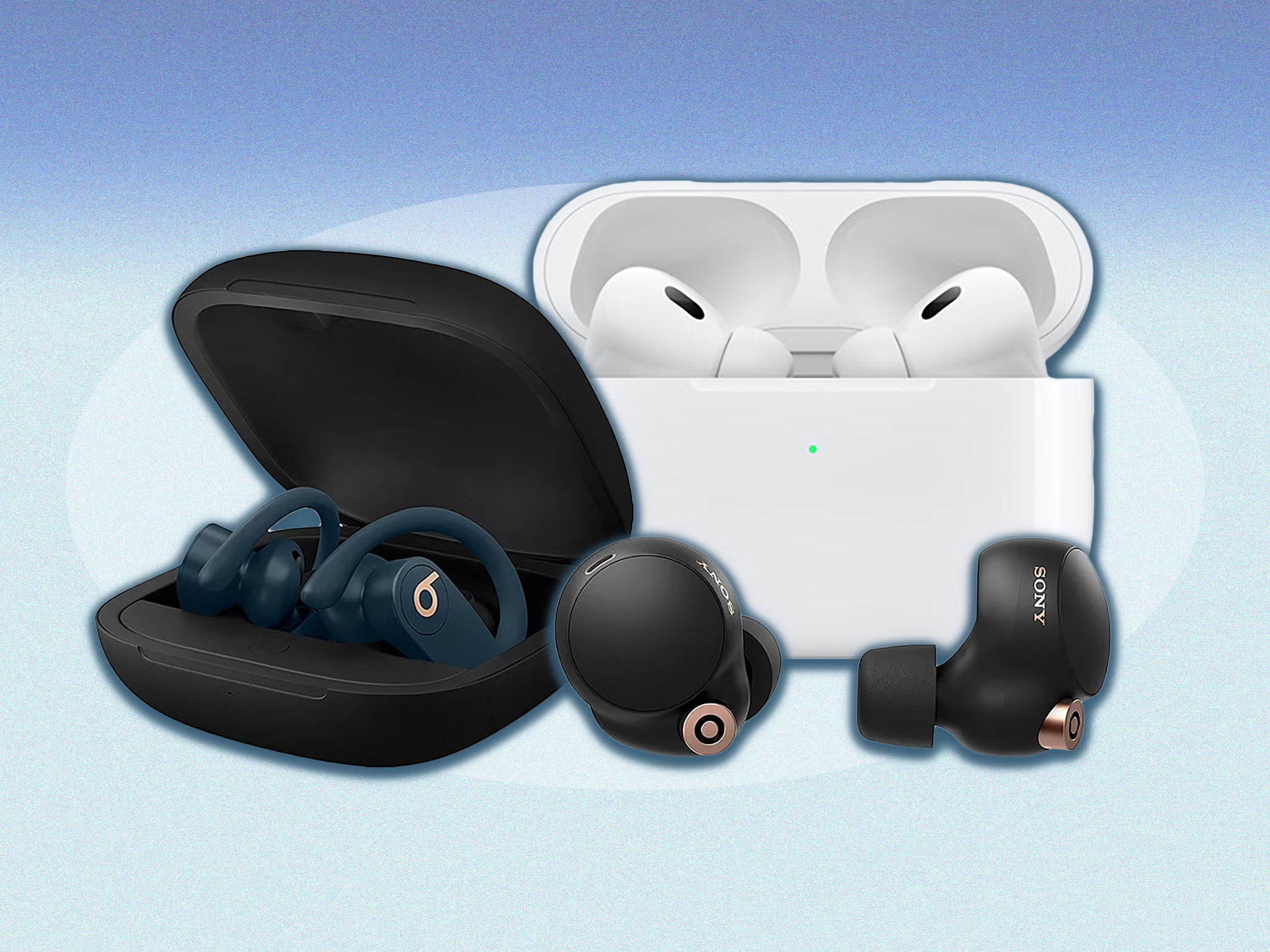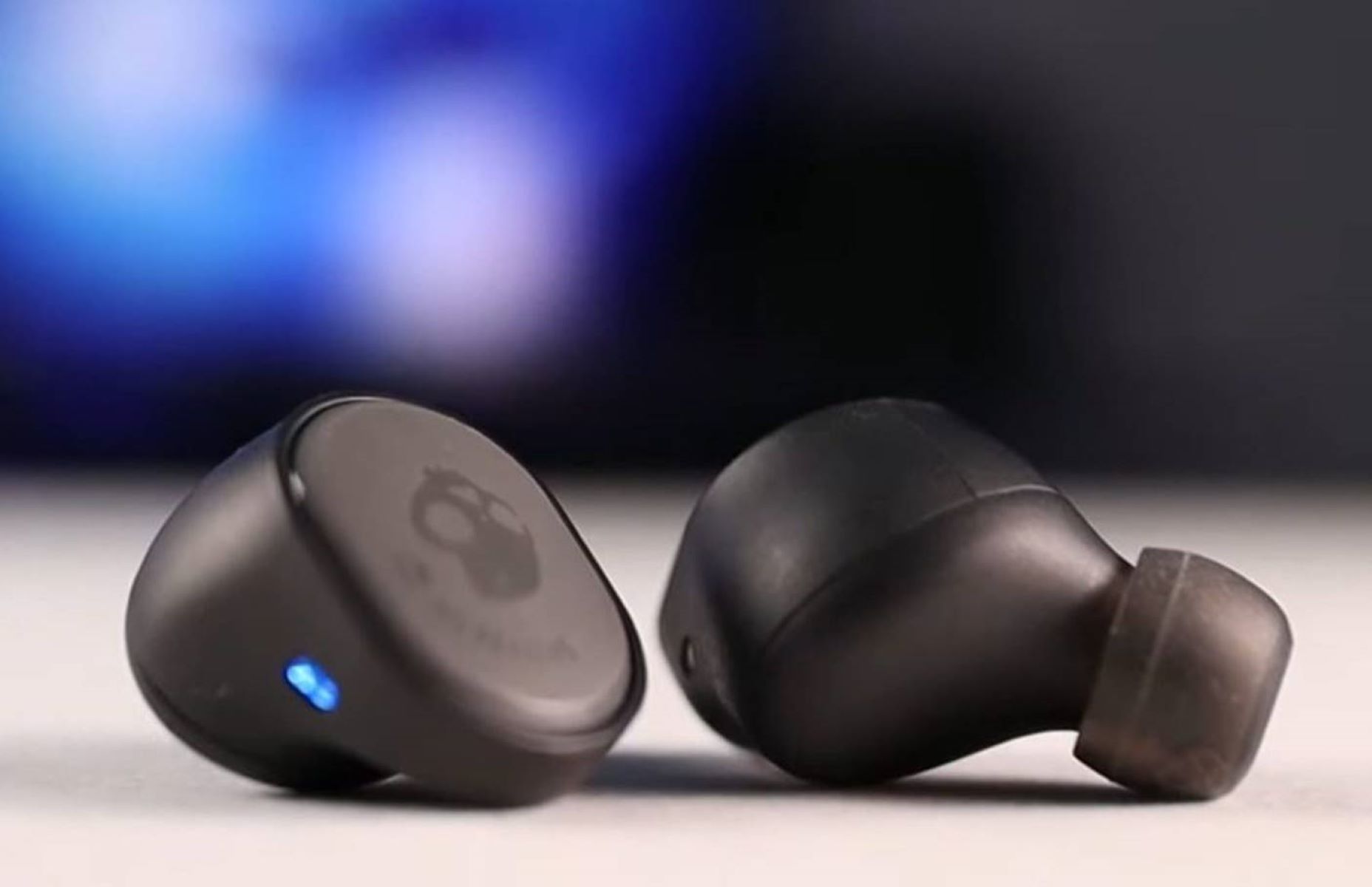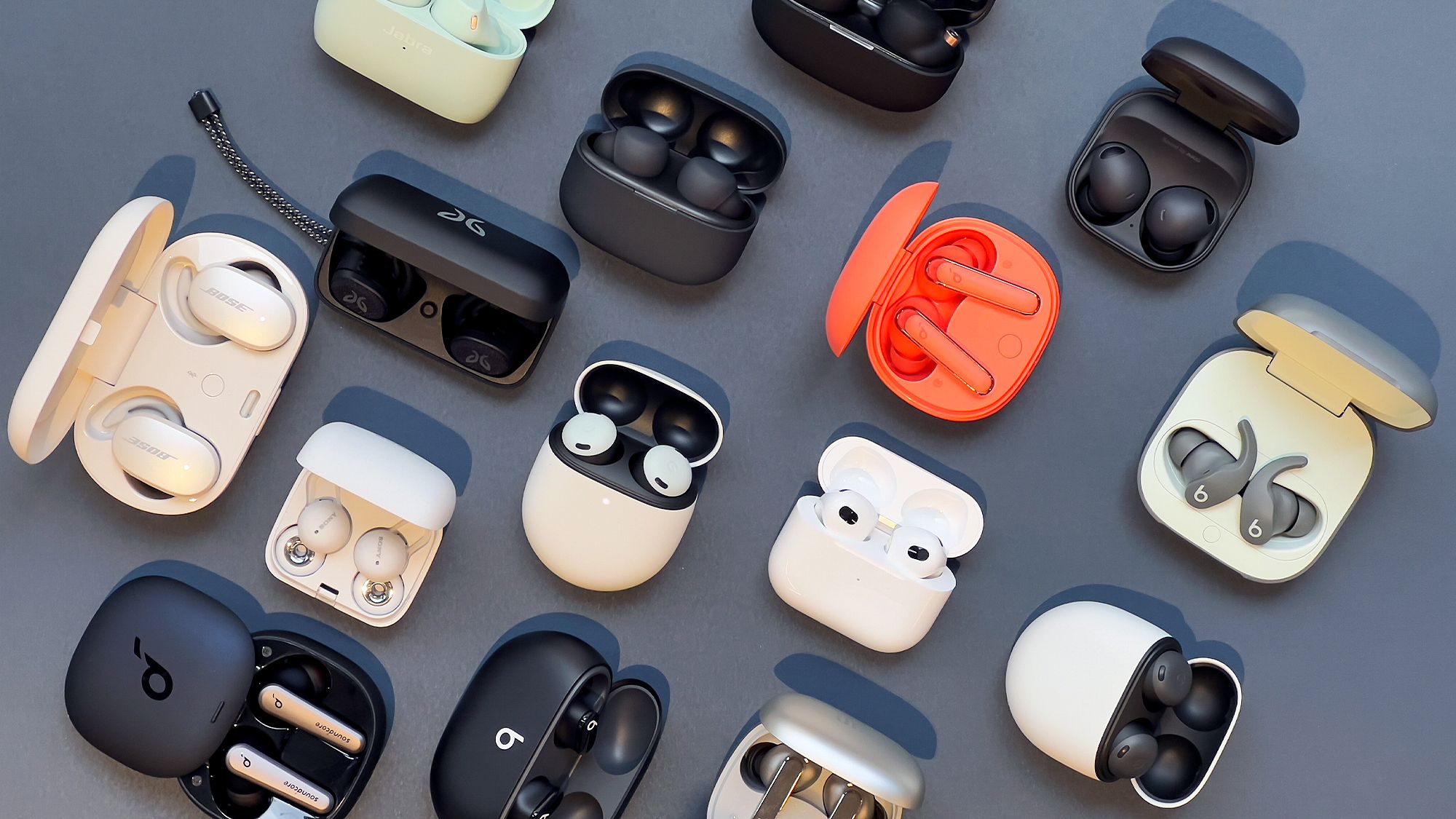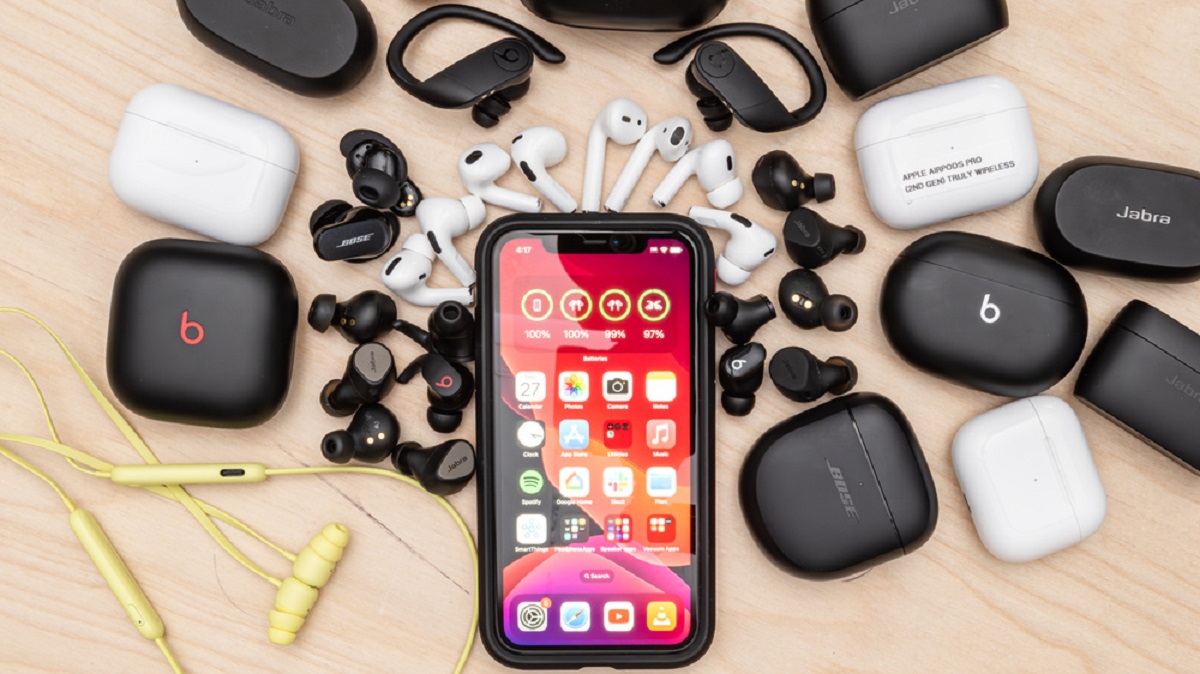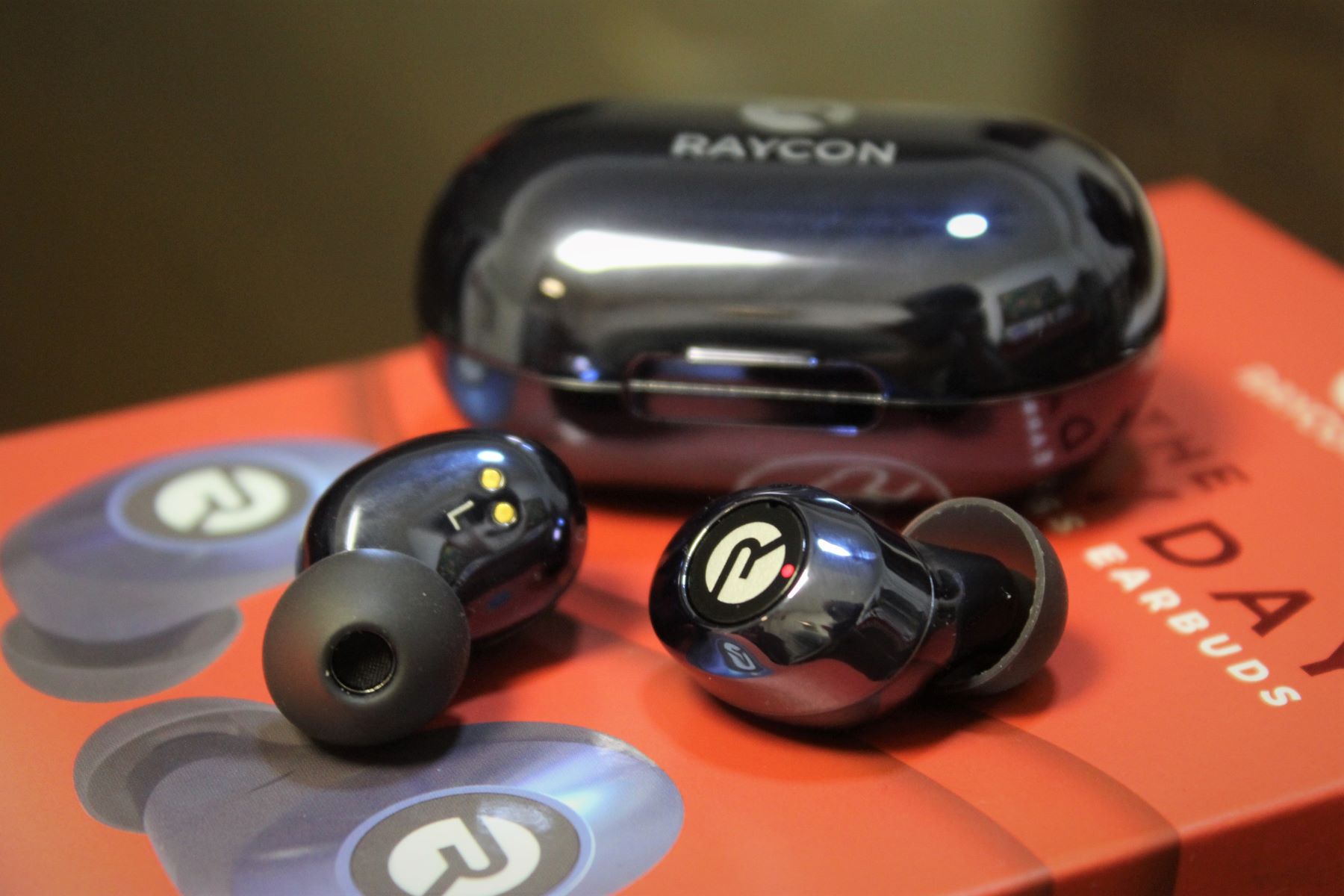Introduction
Wireless earbuds have become increasingly popular in recent years, offering freedom from tangled cords and the convenience of easy connectivity to devices. One of the key features that sets wireless earbuds apart from their wired counterparts is the inclusion of a microphone. The microphone allows users to make and receive calls, use voice commands, and interact with virtual assistants without the need for an additional device. But have you ever wondered where exactly the microphone is located on wireless earbuds?
Understanding the placement of the microphone on wireless earbuds is essential as it directly affects the quality of your hands-free experience. Whether you’re taking calls while on the go or using voice commands to access music or navigation, the microphone plays a crucial role in ensuring clear and effective communication.
In this article, we will explore the common placements of microphones on wireless earbuds. We’ll discuss the benefits and limitations of each placement to help you choose the best option for your needs. So, let’s dive in and discover where the microphone is on wireless earbuds!
Why is the microphone important on wireless earbuds?
The inclusion of a microphone on wireless earbuds serves various essential purposes. Let’s explore why the microphone is so important in this context.
First and foremost, the microphone enables hands-free communication. With wireless earbuds equipped with a microphone, you can effortlessly make and receive calls while on the move. This feature is particularly useful for those who lead an active lifestyle or spend a significant amount of time commuting. Instead of fumbling with your phone or using a separate Bluetooth headset, the built-in microphone allows you to stay connected and carry on conversations without interruption.
Furthermore, the microphone on wireless earbuds plays a vital role in voice commands and virtual assistant integration. With the rise of virtual assistants like Siri, Google Assistant, and Alexa, the ability to interact with them via voice commands has become increasingly important. The microphone on wireless earbuds allows you to easily access and utilize the capabilities of these virtual assistants, whether it’s checking the weather, setting reminders, or controlling your smart home devices.
Another key advantage of having a microphone on wireless earbuds is the convenience it offers during video and audio conferencing. With the widespread adoption of video conferencing platforms, having a reliable microphone becomes crucial for clear and effective communication. Wireless earbuds with a microphone allow you to participate in video calls or online meetings with ease, providing a hands-free solution that facilitates natural conversation without compromising on audio quality.
Lastly, the microphone also enhances the overall usability and versatility of wireless earbuds. With the ability to capture ambient sound, wireless earbuds can employ noise-cancelling technology, reducing background noise and improving the clarity of your voice during calls and voice commands. This feature is particularly beneficial in noisy environments, allowing your voice to be heard clearly without distractions.
In summary, the microphone on wireless earbuds is essential for hands-free communication, voice commands, virtual assistant integration, video conferencing convenience, and enhanced audio quality. It is a key feature that adds functionality and convenience to your wireless listening experience.
Common placements of the microphone on wireless earbuds
Wireless earbuds feature various placements of the microphone, each with its own advantages and considerations. Let’s explore the three common microphone placements found in wireless earbuds:
- External Microphone Placement: In this design, the microphone is located on the exterior surface of the earbud housing. This placement ensures that the microphone is positioned closer to the mouth, allowing for clearer voice capture. The external microphone placement offers excellent call quality and is especially beneficial in noisy environments. However, it may be more susceptible to wind noise due to its exposure to the surrounding environment.
- Stem Microphone Placement: Some wireless earbuds feature a stem extending downwards from the earbud housing. In this design, the microphone is usually integrated into the stem. The advantage of this placement is that the microphone is situated closer to the user’s mouth, resulting in enhanced call quality and reduced ambient noise. The stem also acts as a convenient location for control buttons, further enhancing the user experience. However, the longer stem can affect the overall aesthetics and comfort of the earbuds.
- In-line Controller Microphone Placement: Another common microphone placement is found on the in-line controller, which is a module located along the earbud cable. The in-line controller typically contains buttons for call and music control, as well as a microphone for hands-free calling. This placement allows for easy access to call and media controls, and the microphone is positioned closer to the mouth for improved call quality. However, the in-line controller can sometimes be bulky and add weight to the cable, which may impact user comfort and mobility.
These three microphone placements offer different benefits and considerations, catering to varied user preferences and needs. It’s important to take into account factors like call quality, noise cancellation, wind noise, aesthetics, and comfort when choosing wireless earbuds with a specific microphone placement.
External Microphone Placement
One common placement of the microphone on wireless earbuds is the external microphone placement. In this design, the microphone is situated on the exterior surface of the earbud housing. This positioning ensures that the microphone is closer to the user’s mouth, resulting in clearer voice capture during calls and voice commands.
The external microphone placement offers several advantages. Firstly, it facilitates excellent call quality, allowing you to have conversations without any distortion or interference. The proximity of the microphone to your mouth ensures that your voice is captured accurately, making it ideal for situations where call clarity is crucial.
Additionally, the external microphone placement performs well in noisy environments. By being positioned outside the earbud housing, the microphone is better able to capture your voice and filter out background noise. This results in clearer and more intelligible calls, even when surrounded by ambient sound.
However, one consideration with the external microphone placement is its exposure to external factors, such as wind. Since the microphone is located on the exterior surface of the earbud, it may be more susceptible to wind noise, which can affect call quality. This is something to keep in mind if you frequently use your wireless earbuds in windy conditions.
Overall, the external microphone placement on wireless earbuds offers excellent call quality and performs well in noisy environments. It ensures that your voice is accurately captured for clear communication. However, it is important to be mindful of the potential for wind noise interference in certain conditions.
Stem Microphone Placement
Another common microphone placement on wireless earbuds is the stem microphone placement. This design features a stem that extends downwards from the earbud housing, with the microphone integrated into the stem itself. The stem microphone placement offers several advantages that make it a popular choice among users.
One of the major benefits of the stem microphone placement is its proximity to the user’s mouth. By positioning the microphone closer to the mouth, this placement allows for improved call quality and reduced ambient noise. The microphone can capture the user’s voice more effectively, resulting in clearer and more intelligible calls.
In addition to enhanced call quality, the stem serves as a convenient location for control buttons and additional features. Many wireless earbuds with stem microphones have control buttons integrated into the stem, allowing for easy access to call management and media controls. This adds to the overall user experience and convenience, as you can control your calls and music without needing to reach for your device.
However, it is important to note that the stem microphone placement may not be aesthetically pleasing to everyone. The extension of the stem from the earbud housing can make the earbuds bulkier and less discreet in appearance. This may be a consideration for users who value a sleek and compact design.
When considering wireless earbuds with stem microphone placement, it is important to assess how well the design fits your personal preferences and usage. If call quality and convenient control access are important to you, and you don’t mind the slightly bulkier appearance, then the stem microphone placement may be ideal for your needs.
In-line Controller Microphone Placement
The in-line controller microphone placement is another common option found in wireless earbuds. In this design, the microphone is positioned on the in-line controller, which is a module located along the earbud cable. This placement offers its own set of advantages and considerations.
One of the notable advantages of the in-line controller microphone placement is the convenience it provides. With the microphone located on the in-line controller, you have easy access to call and media controls right at your fingertips. This allows for seamless management of calls and audio playback without needing to reach for your device. The in-line controller typically includes buttons to answer or end calls, adjust volume, and play or pause music, enhancing your overall user experience.
Additionally, the in-line controller microphone placement positions the microphone closer to your mouth for improved call quality. It ensures that your voice is captured clearly and effectively during calls, leading to better communication with the other party. This placement can be particularly beneficial for those who frequently engage in phone conversations or voice commands during their daily activities.
However, it is worth noting that the in-line controller, with its buttons and microphone, can add weight and bulk to the cable of the earbuds. This may impact the overall comfort and mobility, especially during workouts or activities that involve a lot of movement. It is important to consider these factors and choose wireless earbuds with an in-line controller microphone placement that offers a balance between functionality and comfort.
In summary, the in-line controller microphone placement on wireless earbuds offers convenient access to call and media controls while keeping the microphone within close proximity to your mouth. It ensures improved call quality and enables seamless call management. However, it is important to assess the comfort and mobility aspects associated with the in-line controller, as the added weight and bulk may affect the user experience in certain situations.
Understanding the pros and cons of each microphone placement
Now that we’ve explored the common microphone placements on wireless earbuds, let’s consider the pros and cons of each design:
External Microphone Placement:
Pros:
- Excellent call quality
- Effective in noisy environments
Cons:
- Potential wind noise interference
Stem Microphone Placement:
Pros:
- Improved call quality
- Reduced ambient noise
- Convenient control buttons
Cons:
- Slightly bulkier appearance
In-line Controller Microphone Placement:
Pros:
- Convenient access to call and media controls
- Improved call quality
Cons:
- Potential impact on comfort and mobility due to added weight and bulk
Each microphone placement offers its own set of advantages and considerations. The external microphone placement provides excellent call quality but may be more susceptible to wind noise. The stem microphone placement offers improved call quality and reduced ambient noise, along with convenient control buttons, but can result in a slightly bulkier appearance. The in-line controller microphone placement allows for easy access to call and media controls, while also ensuring improved call quality, but may impact comfort and mobility due to added weight and bulk.
When choosing wireless earbuds, it is important to consider your personal preferences, usage patterns, and the environments in which you typically use them. Assessing the pros and cons of each microphone placement will help you make an informed decision and find the option that best suits your needs.
Conclusion
The placement of the microphone on wireless earbuds significantly impacts the functionality and user experience. We have explored three common microphone placements: external, stem, and in-line controller. Each design offers its own set of advantages and considerations.
The external microphone placement ensures excellent call quality and performs well in noisy environments. However, it may be more susceptible to wind noise. The stem microphone placement provides improved call quality and reduced ambient noise, along with convenient control buttons integrated into the stem. Yet, this design may result in a slightly bulkier appearance. The in-line controller microphone placement offers easy access to call and media controls, along with improved call quality. However, the added weight and bulk of the in-line controller may affect comfort and mobility.
When selecting wireless earbuds, consider your specific needs and preferences. If call quality is your top priority and wind noise is not a concern, wireless earbuds with an external microphone placement may be the best fit. If you value enhanced call quality and control convenience, along with a sleek design, consider wireless earbuds with a stem microphone placement. And if easy access to call and media controls is a priority, and you can tolerate slightly bulkier earbuds, the in-line controller microphone placement may be the right choice for you.
Ultimately, understanding the different microphone placements on wireless earbuds empowers you to make an informed decision based on your communication needs and personal preferences. Whichever design you choose, the microphone on your wireless earbuds will undoubtedly enhance your hands-free communication, voice commands, and overall listening experience.







